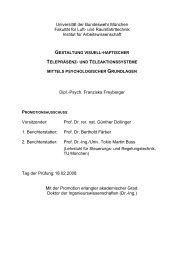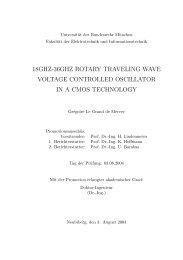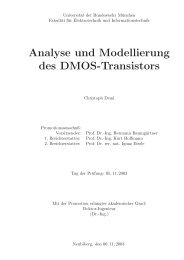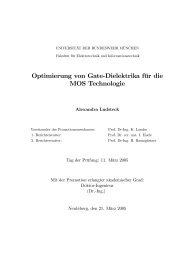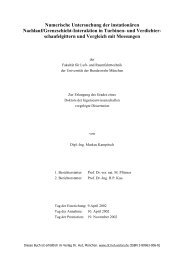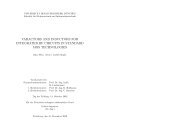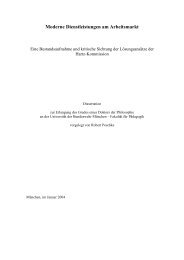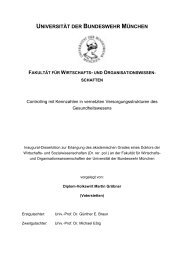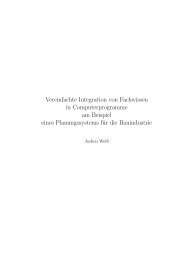Precise Orbit Determination of Global Navigation Satellite System of ...
Precise Orbit Determination of Global Navigation Satellite System of ...
Precise Orbit Determination of Global Navigation Satellite System of ...
You also want an ePaper? Increase the reach of your titles
YUMPU automatically turns print PDFs into web optimized ePapers that Google loves.
Chapter 3 <strong>Orbit</strong> Tracking <strong>System</strong> and Their Error Budgets<br />
3.3 Conclusion<br />
There are still many other systems which can be used for GNSS-2 satellite orbit determination, for examples,<br />
DGPS or TOPEX/POSEIDON systems etc, but these systems are all dependent on GPS and are not discussed<br />
further here.<br />
In this chapter, the major current tracking systems <strong>of</strong> orbit determination were briefly discussed and evaluated.<br />
From this discussion it can be seen that the range, range rate and carrier phase are the major types <strong>of</strong><br />
observations for the orbit determination systems. The ground based tracking systems are still widely used for<br />
tracking satellites, for example, IGS global tracking network. For GNSS-2 satellite navigation system using<br />
IGSO, GEO and MEO satellites, some special factors should be considered. IGSO and GEO satellites are high<br />
altitude satellites about 42000 km from the earth surface, which will lead to following results, (1) radial change<br />
between satellite and ground tracking stations or ground beacons is slow, and thus, the Doppler shift which is<br />
based on radial changes is not significantly sensitive to IGSO and GEO satellites, and (2) there will be worse<br />
influence <strong>of</strong> geometrical distribution <strong>of</strong> the tracking station network on the accuracy <strong>of</strong> IGSO and GEO satellite<br />
orbit determination than on any other satellites. From (1), Doppler shift-based systems such as S-Band, DORIS<br />
and the Doppler measurement part <strong>of</strong> PRARE cannot achieve high accuracy <strong>of</strong> orbit determination for IGSO and<br />
GEO satellites. The remaining observations available are range and carrier phase. From (2), it is best that wide<br />
spaced ground tracking stations could be used for IGSO, GEO and MEO satellite orbit determination. According<br />
to §3.2.3 it can be seen that the current space-borne GPS/GLONASS navigation systems may not be suitable for<br />
IGSO and GEO satellite orbit determination, because the GPS/GLONASS signals are transmitting towards earth<br />
surface in order to assure global coverage. It is generally not possible for the onboard receiver to receive<br />
GPS/GLONASS signals at a geostationary and geosynchronous orbits, and even though the signal may be<br />
received at some special conditions, there is still a small chance <strong>of</strong> more than 4 satellites available for a fixed<br />
point at geostationary orbit over one day. Therefore the use <strong>of</strong> space-borne GPS/GLONASS navigation systems<br />
alone for orbit determination <strong>of</strong> IGSO and GEO satellites is still very difficult, but onboard orbit determination<br />
<strong>of</strong> GNSS-2 satellites could be possible due to successful launching <strong>of</strong> German space mission Equator-S and new<br />
type <strong>of</strong> GPS satellites (IIF) (Balbach et al, 1998). The Equator-S satellite used ground tracking stations and<br />
onboard GPS receiver to determine the Equator-S orbit. Using inter-satellite-links (see §3.2.3) would be also<br />
very promising.<br />
According to the discussion above, a ground-based tracking system with range (including laser ranging) and<br />
carrier phase observations for IGSO, GEO and MEO satellite orbit determination may be a best choice for<br />
GNSS-2 systems.<br />
30



